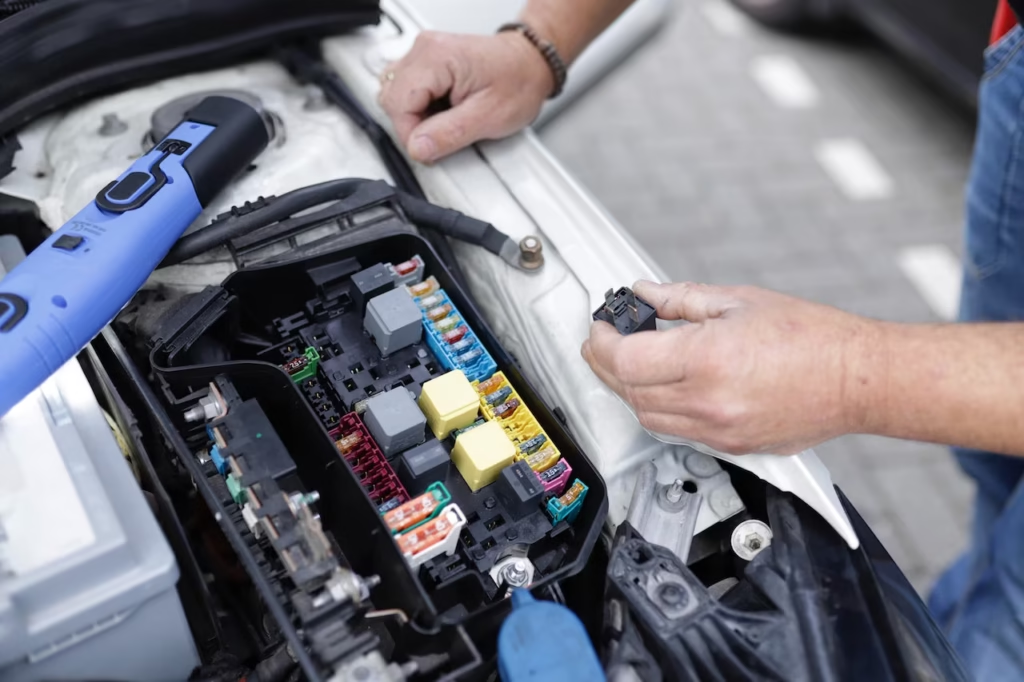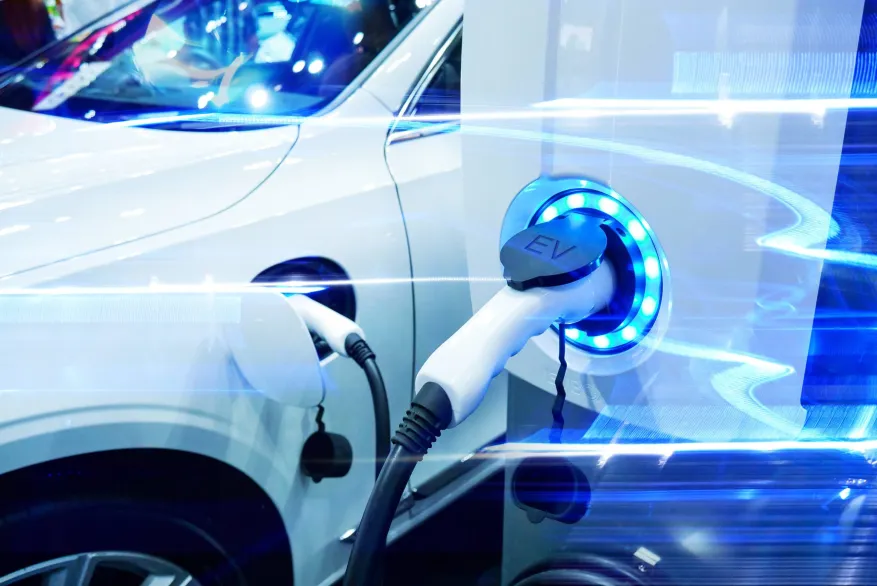As the world shifts toward sustainable transportation, the electric car motor has emerged as the beating heart of modern electric vehicles (EVs). Unlike internal combustion engines that rely on gasoline, electric motors are clean, efficient, and offer instant torque — making EVs quieter, faster, and more environmentally friendly.
In this guide, we’ll explore what an electric car motor is, how it works, the types available, key components, and why it’s transforming the future of mobility.
🚗 What Is an Electric Car Motor?
An electric car motor is a device that converts electrical energy into mechanical energy to power the wheels of an electric vehicle. Instead of burning fuel, it uses electricity stored in the battery to create motion.
These motors are the core of EV propulsion and are designed for high efficiency, durability, and quick acceleration.
⚙️ How Does an Electric Car Motor Work?

Electric motors in cars operate based on the principle of electromagnetism. Here’s a simplified breakdown:
- Power Supply: The electric motor receives current from the EV battery.
- Magnetic Field Generation: The current flows through the motor’s coils, generating a magnetic field.
- Rotor Movement: The interaction between magnetic fields (from stator and rotor) creates rotational force.
- Drivetrain Engagement: This torque is transferred to the wheels via the drivetrain, propelling the car forward.
This process allows for instant torque delivery, meaning electric cars accelerate quickly with minimal lag.
🧩 Key Components of an Electric Car Motor
- Stator: The stationary part that creates a rotating magnetic field.
- Rotor: The rotating part connected to the wheels.
- Inverter: Converts DC battery power to AC current (in most motors).
- Controller: Regulates power flow based on throttle input.
- Cooling System: Prevents the motor from overheating.
Together, these components provide a smooth, quiet, and responsive driving experience.
🔍 Types of Electric Car Motors
Different EVs use different types of motors based on performance, cost, and application.
1. AC Induction Motor (Asynchronous Motor)
- Developed by Nikola Tesla.
- No permanent magnets, uses electromagnetic induction.
- Example: Used in early Tesla Model S.
2. Permanent Magnet Synchronous Motor (PMSM)
- Contains rare-earth magnets in the rotor.
- Highly efficient and compact.
- Example: Used in most modern EVs including Tesla, Hyundai, and Kia.
3. Brushless DC Motor (BLDC)
- Similar to PMSM but uses different control methods.
- High efficiency and low maintenance.
- Found in electric scooters, e-bikes, and small EVs.
4. Switched Reluctance Motor
- Simple design with no magnets or coils on the rotor.
- Cost-effective but noisier.
- Being developed for budget-friendly EVs.
✅ Advantages of Electric Car Motors
⚡ 1. Instant Torque and Acceleration
Electric motors deliver full torque from a standstill, resulting in fast and smooth acceleration.
🌱 2. Zero Tailpipe Emissions
No fuel combustion means zero exhaust gases — making them eco-friendly.
🔇 3. Quieter Operation
Electric motors produce minimal noise and vibration for a more peaceful ride.
🔧 4. Lower Maintenance
No oil changes, fewer moving parts, and reduced wear lead to lower maintenance costs.
🔁 5. Regenerative Braking
Electric motors can reverse operation to recover energy during braking, improving efficiency.
❌ Disadvantages to Consider

- Higher upfront cost (though decreasing with time)
- Limited range compared to gas cars (depending on battery size)
- Dependence on battery performance
- Availability of charging infrastructure in some areas
However, ongoing advancements in battery technology and motor efficiency are quickly closing these gaps.
🧪 Electric Motor vs Internal Combustion Engine (ICE)
| Feature | Electric Motor | Internal Combustion Engine |
| Power Source | Electricity | Gasoline/Diesel |
| Torque Delivery | Instant | Delayed |
| Maintenance | Low | High |
| Emissions | Zero (at point of use) | High |
| Efficiency | 85–90% | 25–30% |
| Noise | Quiet | Loud |
🔋 Real-World Examples of Electric Motors in EVs
- Tesla Model 3 – Dual electric motors (PMSM), performance-focused.
- Nissan Leaf – Uses a synchronous motor for urban efficiency.
- BMW i4 – High-performance motor with intelligent control systems.
- Chevrolet Bolt EV – Compact motor with impressive torque.
Each manufacturer tunes the motor for different performance characteristics, from economy to speed.
🔧 Maintaining an Electric Car Motor
While they require less maintenance, electric motors still need care:
- Regular cooling system checks
- Occasional software updates
- Drivetrain and brake inspections
- Ensuring proper battery health (indirectly impacts motor performance)
🌍 The Future of Electric Car Motors
The future of electric motors is focused on:
- Smaller, lighter designs
- Increased efficiency
- Cheaper, magnet-free technologies
- Integrated wheel-hub motors for design flexibility
As EV technology matures, electric motors will become faster, cheaper, and more efficient, making gas engines obsolete.
FAQs About Electric Car Motors
Q1: How long do electric car motors last?
Most electric motors are designed to last over 15 years or 1 million miles, with minimal degradation.
Q2: Can electric motors be repaired?
Yes, but due to their reliability and simplicity, major repairs are rare. Most issues are related to inverters or controllers.
Q3: Are all electric motors the same in EVs?
No. Automakers use different types of motors depending on performance, cost, and design goals.
Q4: Do electric motors need oil changes?
No. Unlike gas engines, electric motors don’t require oil for lubrication.
Q5: Why do EVs have two motors sometimes?
Dual motors provide all-wheel drive, better acceleration, and improved traction control.
Q6: Are electric motors waterproof?
Yes, most are sealed and rated for driving in wet conditions, including rain and car washes.
Q7: What is regenerative braking in an electric motor?
It’s when the motor reverses during braking to generate electricity and recharge the battery.
Q8: Which is better: AC or DC motor in EVs?
AC motors (especially PMSM) are more common due to their higher efficiency and performance in modern EVs.
Conclusion: The Power Behind the EV Revolution
The electric car motor is not just a component — it’s the core of clean, fast, and efficient transportation. Whether you’re considering buying an EV or just curious about how they work, understanding the motor helps you appreciate the power and potential of electric mobility. As battery and motor tech evolve, EVs will become more accessible and practical than ever before — accelerating us toward a greener, smarter driving future.




